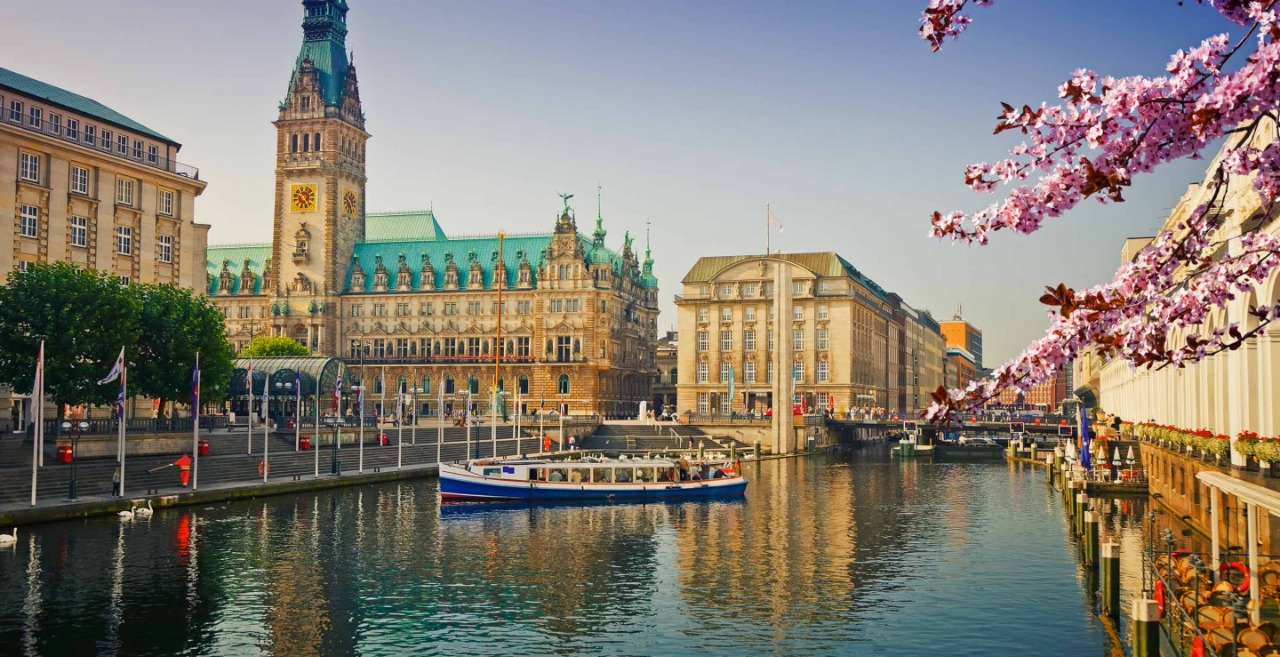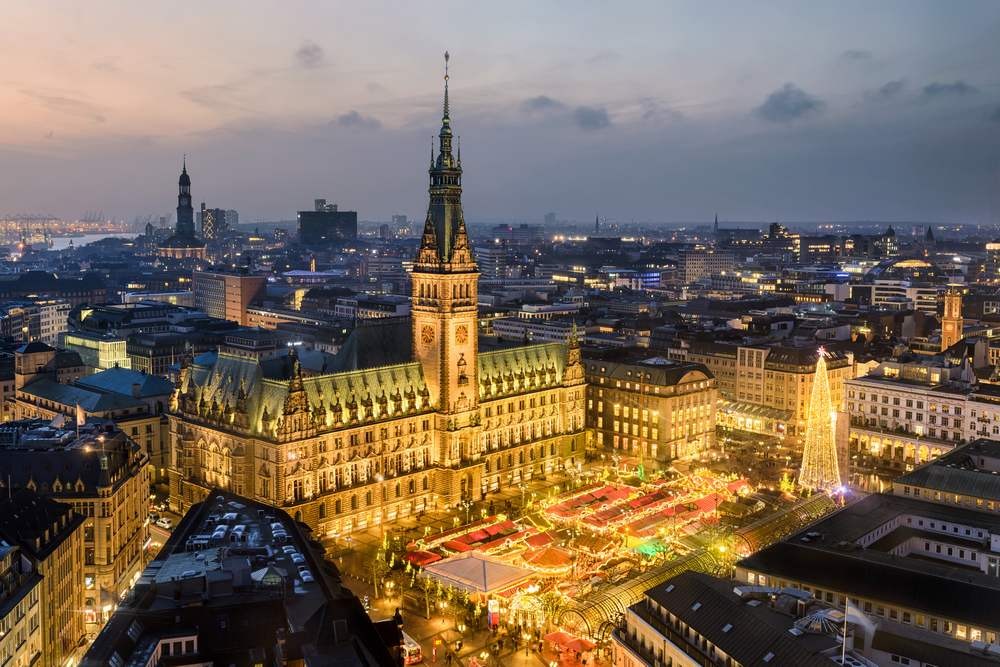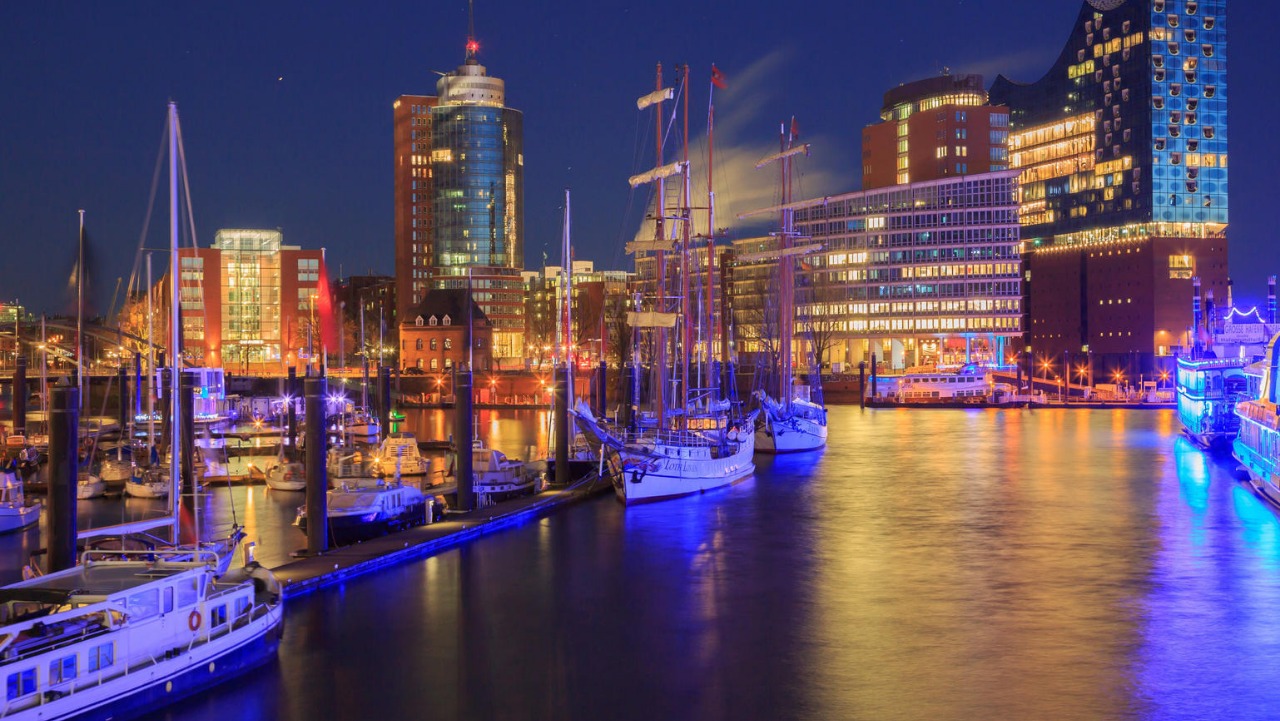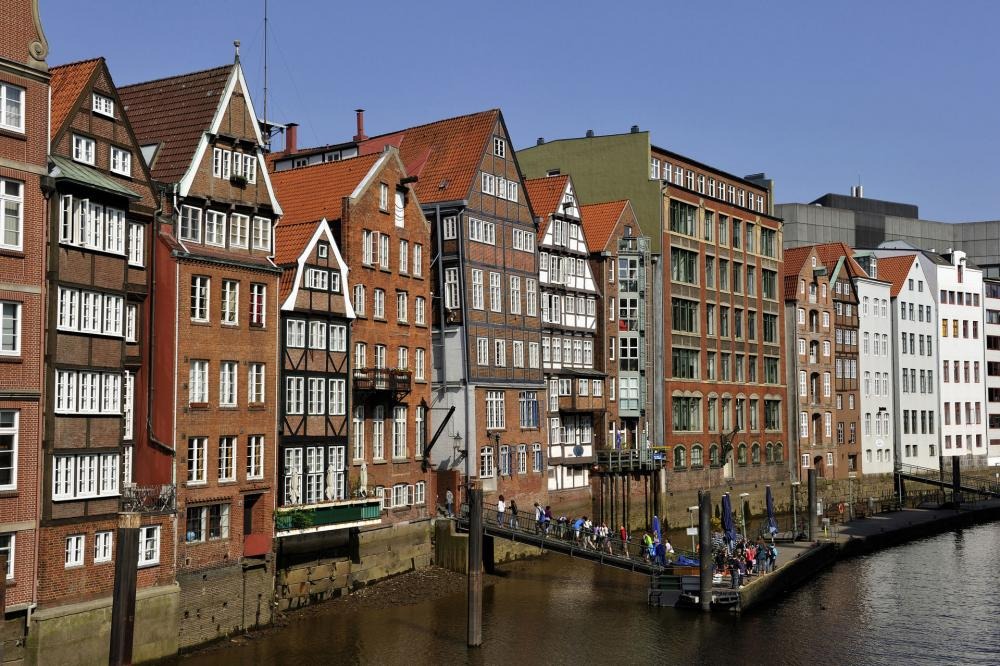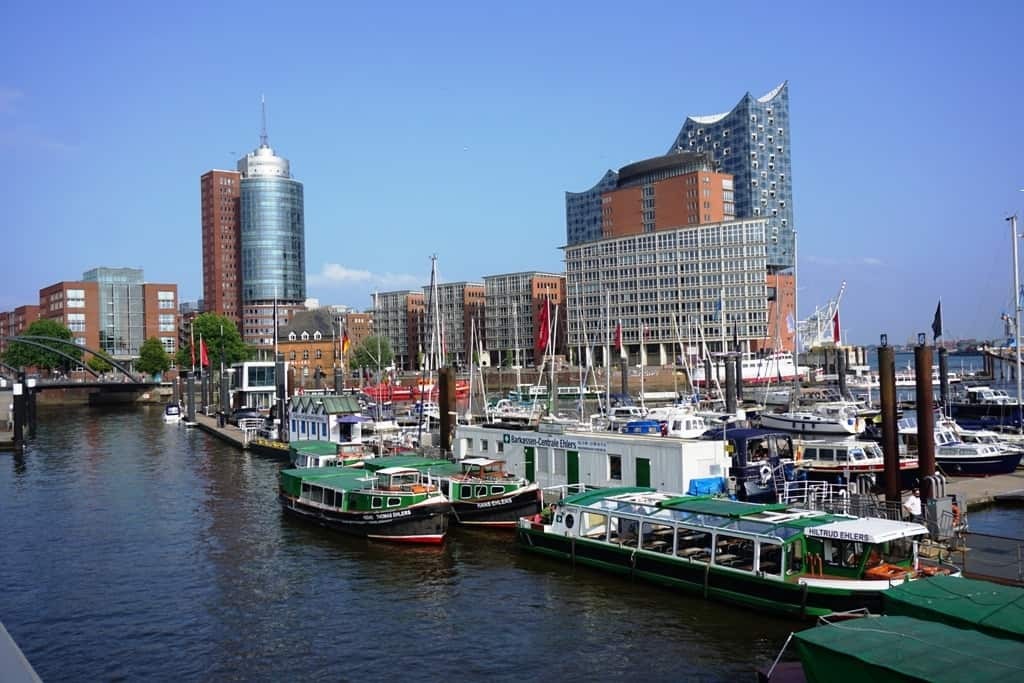Photos de: Hambourg
Carte de localisation
Aéroports
Hôtels et autres hébergements
Parcours de golf
Que visiter
Où manger
Où s´amuser
Consulats et Ambassades
World Nomads
L´assurance voyage avec la plus grande couverture

L´assurance voyage avec la plus grande couverture

Hambourg
La ville libre et hanséatique de Hambourg est une ville-état (Stadtstaat) située dans le nord de l'Allemagne, sur les rives de l'Elbe. C'est la deuxième plus grande du pays et la huitième de l'Union européenne. Le port est l’un des plus grands au monde et, selon les estimations, dépassera Rotterdam en tant que principal port européen. La ville est aussi un centre industriel de grande importance. Il se situe entre les états (Bundesländer) du Schleswig-Holstein et de la Basse-Saxe.
En plus de la cité (Stadtstaat), ville dotée du statut d'État, Hambourg est également une ville indépendante (Kreisfreie Stadt) ou un district urbain (Stadtkreis), c'est-à-dire qu'elle a le statut de district (Kreis).
En plus de la cité (Stadtstaat), ville dotée du statut d'État, Hambourg est également une ville indépendante (Kreisfreie Stadt) ou un district urbain (Stadtkreis), c'est-à-dire qu'elle a le statut de district (Kreis).
Tourisme
Endommagée pendant la Seconde Guerre mondiale, la ville affiche peu de sa vieille ville. Les ruines de la tour Nikolaikirche rappellent les conséquences tragiques de la guerre. À proximité, la Jakobikirche (1340) a été reconstruite et affiche son style original. Dans la partie intérieure se trouve l'orgue du dix-septième siècle, œuvre d'Arp Schnitger. La Michaeliskirche est une autre église remarquable. Depuis le sommet de sa tour de 132 m, vous avez une vue magnifique sur la ville.
La mairie néo-renaissance de Hambourg se trouve sur le Rathausmarkt. Au nord se trouve le lac Binnenalster. La célèbre Kunsthalle, qui raconte l'histoire de l'art européen des temps médiévaux au XXe siècle, se trouve également à proximité. On notera en particulier l’aile dédiée à la peinture romantique allemande du XIXe siècle.
Le Chilehaus (1922-1924) de Fritz Höger au Kontorhausviertel est l'exemple le plus célèbre des bâtiments expressionnistes de la ville.
Le port de Hambourg, deuxième plus grand d'Europe (plus petit que Rotterdam), mérite le détour. Deux navires-musées intéressants sont ancrés dans le port: le cargo Cap San Diego et le voilier Rickmer Rickmers (1896).
La mairie néo-renaissance de Hambourg se trouve sur le Rathausmarkt. Au nord se trouve le lac Binnenalster. La célèbre Kunsthalle, qui raconte l'histoire de l'art européen des temps médiévaux au XXe siècle, se trouve également à proximité. On notera en particulier l’aile dédiée à la peinture romantique allemande du XIXe siècle.
Le Chilehaus (1922-1924) de Fritz Höger au Kontorhausviertel est l'exemple le plus célèbre des bâtiments expressionnistes de la ville.
Le port de Hambourg, deuxième plus grand d'Europe (plus petit que Rotterdam), mérite le détour. Deux navires-musées intéressants sont ancrés dans le port: le cargo Cap San Diego et le voilier Rickmer Rickmers (1896).
Gastronomie
La gastronomie de Hambourg est façonnée par la convergence de diverses tendances culinaires en Allemagne, mais se concentre sur les produits les plus fabriqués à la main; Les poissons de l'Elbe, les terres environnantes et les animaux de ces régions. Surtout, la cuisine de fruits de mer se distingue ici.
Ingrédients Principaux
Le poisson et les fruits de mer sont l’un des principaux ingrédients de la cuisine de Hambourg; La générosité de l'Elbe fournissait une grande variété de poissons, tels que le hareng ou la plie. Il existe également de nombreux fruits et légumes locaux tels que des oignons, des haricots, du chou vert, etc. Parmi les viandes, le porc, qui est largement utilisé, comprend également le bœuf, bien qu’en plus petite quantité.
Dans la bière, la bière est également inévitable, tout comme les liqueurs telles que les vins et autres céréales fermentées.
Ingrédients Principaux
Le poisson et les fruits de mer sont l’un des principaux ingrédients de la cuisine de Hambourg; La générosité de l'Elbe fournissait une grande variété de poissons, tels que le hareng ou la plie. Il existe également de nombreux fruits et légumes locaux tels que des oignons, des haricots, du chou vert, etc. Parmi les viandes, le porc, qui est largement utilisé, comprend également le bœuf, bien qu’en plus petite quantité.
Dans la bière, la bière est également inévitable, tout comme les liqueurs telles que les vins et autres céréales fermentées.
Climat
En raison de l'influence maritime, le climat est plus doux que dans l'est de l'intérieur.
Les mois les plus chauds à Hambourg sont les mois de juin, juillet et août avec des températures moyennes comprises entre 19,9 et 22,2 ° C. Des températures avoisinant les 28 ° C ne sont pas improbables en été. Le climat est humide toute l'année.
Les mois les plus chauds à Hambourg sont les mois de juin, juillet et août avec des températures moyennes comprises entre 19,9 et 22,2 ° C. Des températures avoisinant les 28 ° C ne sont pas improbables en été. Le climat est humide toute l'année.
Autres destinations touristiques en:
Allemagne
Allemagne
Autres destinations touristiques mondiales
Pourquoi réserver avec CLUBE TRAVEL
Les meilleurs prix
Nos partenariats avec les plus grands opérateurs mondiaux offrent une recherche sur les meilleurs prix du marché.
Plus options
Chez Rotas Turisticos, vous pouvez réserver l´hôtel, acheter le billet d´avion, réserver le transfert de l´aéroport à l´hôtel et inversement, réserver les excursions locales, louer la voiture, prendre une assurance de voyage et consulter les lieux à visiter et les endroits où aller.
Destinations de vacances
Des centaines de destinations de vacances avec toutes les options qui vous permettent de choisir facilement la destination qui convient le mieux à vos vacances de rêve.
CLUBE TRAVEL
Links

